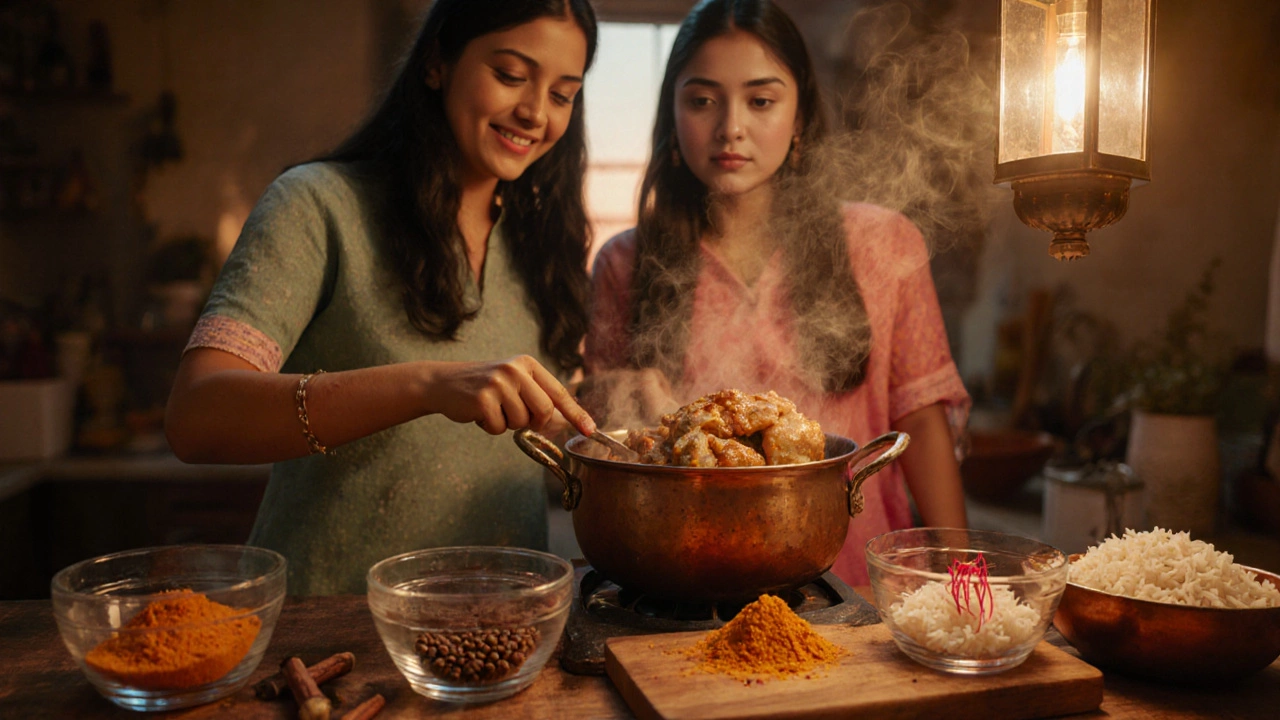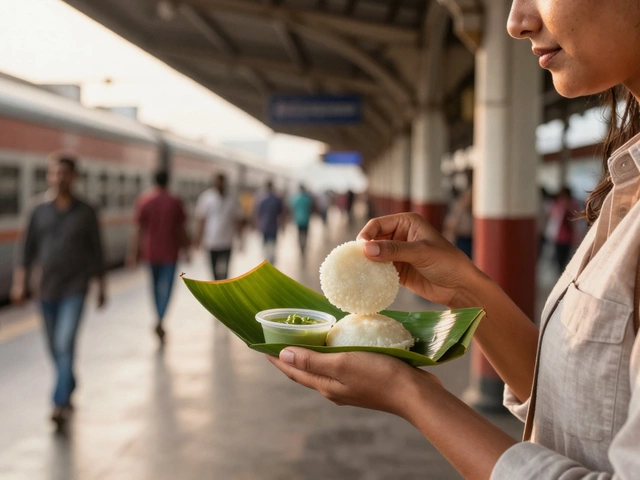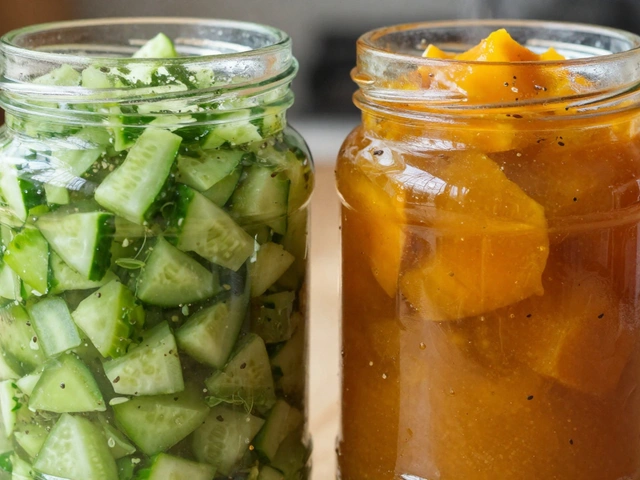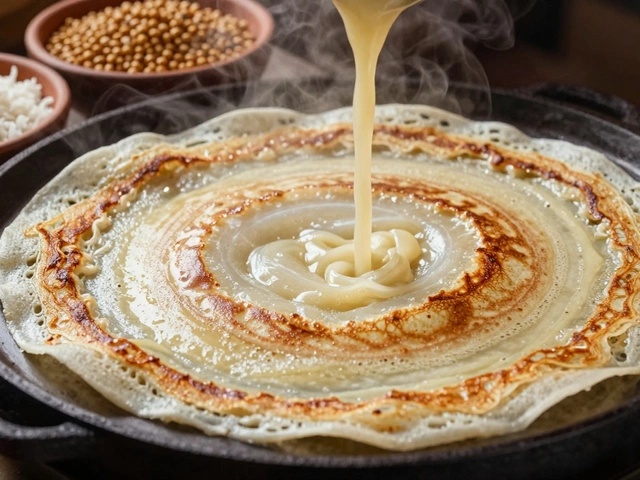Biryani Ingredient Calculator
Enter the number of servings you want to make and get the exact quantities of ingredients needed.
Ingredients Required:
Ever wondered why biryani can turn a simple dinner into a celebration? The secret lies in layers of fragrant rice, tender meat, and a handful of spices that have been perfecting the art of aroma for centuries. Below you’ll find a crystal‑clear roadmap that takes you from pantry basics to a steaming platter you can serve with pride.
Quick Summary
- Marinate chicken in yogurt, ginger‑garlic paste, and spices for at least 30minutes.
- Par‑boil seasoned basmati rice with whole spices; keep it fluffy.
- Fry onions until deep‑golden, then blend with ghee and the cooked chicken.
- Layer rice over the chicken, sprinkle saffron‑infused milk, and seal the pot.
- Cook on low heat (dum) for 20minutes, let it rest, then fluff and serve.
What Is Biryani?
Biryani is a layered rice dish originating from the Indian subcontinent, traditionally made with long‑grain basmati rice, meat or vegetables, and a complex blend of spices. It is celebrated for its aromatic profile and the way the flavors meld during the slow‑cooking "dum" process.
Key Ingredients and Their Roles
Understanding each component helps you tweak the recipe without breaking the balance.
- Basmati rice is a long‑grain Indian rice prized for its floral scent and ability to stay separate when cooked. Use aged rice (12‑24months) for best texture.
- Chicken provides protein and juiciness. Bone‑in pieces keep the meat moist during the final dum.
- Yogurt acts as a tenderizer and adds mild tang, helping the spices penetrate the meat.
- Ghee (clarified butter) gives richness and a glossy finish to the rice.
- Onion caramelized until deep‑golden creates a sweet, nutty base that balances heat.
- Garam masala is a warm spice blend (cinnamon, cloves, cardamom, nutmeg) added toward the end for aromatic lift.
- Saffron infuses the rice with a golden hue and subtle earthy flavor.
- Whole spices - cumin seeds, bay leaves, cinnamon sticks, and green cardamom - are toasted in ghee to release essential oils before the rice hits the pot.
Essential Tools
- Heavy‑bottomed, wide‑mouth pot (ideally a Dutch oven) with a tight‑fitting lid for the dum step.
- Large saucepan for par‑boiling rice.
- Sharp knife and cutting board for chopping onions and herbs.
- Fine‑mesh strainer for rinsing rice.
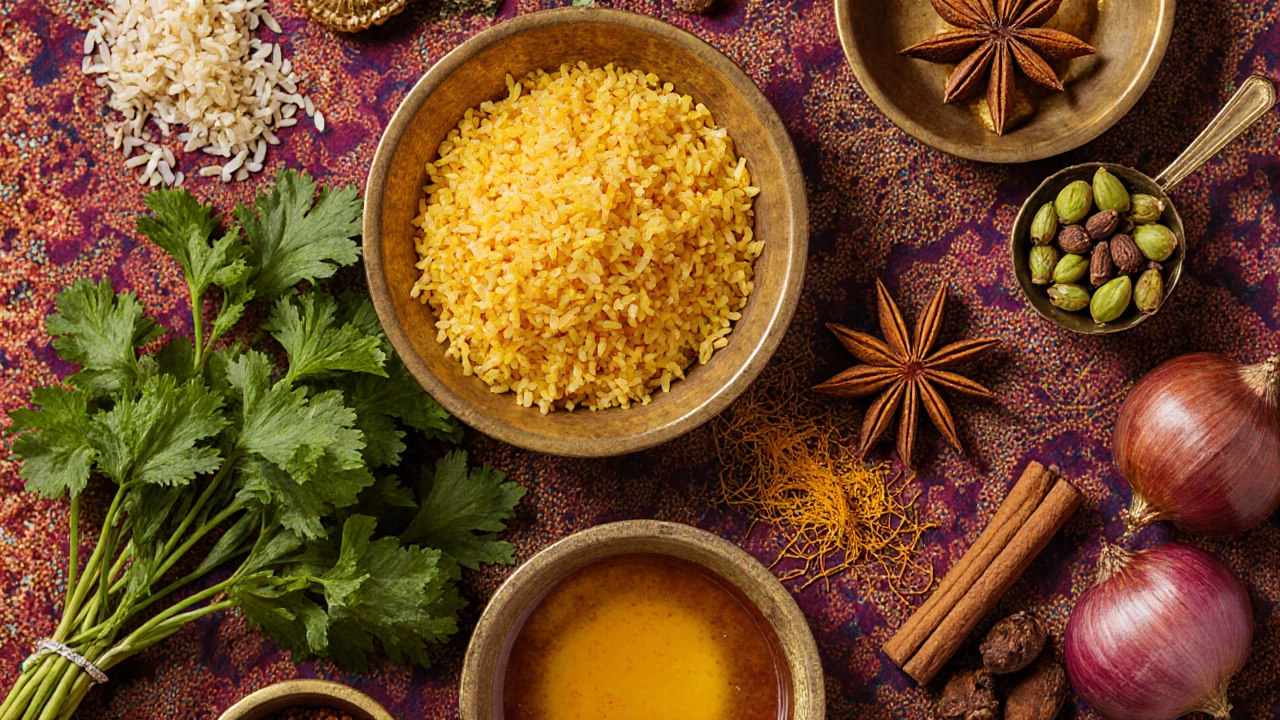
Step‑by‑Step Instructions
- Marinate the chicken. In a bowl combine 500g chicken pieces, 1cup plain yogurt, 1tbsp ginger‑garlic paste, 1tsp turmeric, 1tsp chili powder, 1tsp ground coriander, and salt. Mix well, cover, and refrigerate for 30minutes to 2hours.
- Prep the rice. Rinse 2cups basmati rice under cold water until the water runs clear (about 4times). Soak for 20minutes, then drain.
- Par‑boil the rice. Bring a large pot of water to boil, add a pinch of salt, 2‑3 whole spices (cinnamon stick, 3 cardamom pods, 5 cumin seeds). Add the soaked rice and cook 5‑6minutes until 70% done. Drain and set aside.
- Fry onions. Heat 3tbsp ghee in a deep skillet. Add 2 thinly sliced large onions; fry on medium‑low heat, stirring occasionally, until they turn deep amber (about 12‑15minutes). Remove half for garnish; keep the rest in the pan.
- Cook the chicken. To the onions add the marinated chicken, spreading it evenly. Cook on medium heat, stirring occasionally, for 8‑10minutes until the meat is sealed and juices start to thicken.
- Layer the biryani. Sprinkle the fried‑onion garnish over the chicken. Gently spread the par‑boiled rice on top, forming an even layer. Drizzle 2tbsp melted ghee, sprinkle 1tsp garam masala, and scatter a handful of chopped fresh cilantro and mint.
- Saffron magic. Dissolve a pinch of saffron strands in 2tbsp warm milk; pour the colored milk over the rice for color and aroma.
- Seal and dum. Cover the pot tightly with its lid; if the lid isn’t airtight, seal the edges with a clean kitchen towel and then place the lid. Place the pot on a low flame or heat‑diffuser and cook for 20minutes. Do NOT lift the lid during this time.
- Rest and fluff. Turn off the heat and let the biryani rest, still covered, for 10minutes. Then gently fluff the rice with a wide spatula, mixing the layers just enough to see the colors swirl.
- Serve. Scoop onto a large serving plate, garnish with the remaining fried onions and a few extra cilantro leaves. Accompany with raita, boiled eggs, or a fresh cucumber salad.
Spice Blend Comparison
| Blend | Main Ingredients | Heat Level (1‑5) | Best Use |
|---|---|---|---|
| Homemade Biryani Masala | Cardamom, cloves, cinnamon, nutmeg, black pepper, bay leaf, star anise | 3 | Layered cooking, adds depth |
| Store‑bought Biryani Spice | Similar to homemade but often includes dried mint and chili powder | 4 | Quick prep, reliable flavor |
| Garam Masala | Cinnamon, cloves, nutmeg, cardamom, cumin | 2 | Finish dish, aroma boost |
Pro Tips & Common Pitfalls
- Rice texture. Over‑cooking the rice before the dum step makes it mushy. Aim for 70% done.
- Layer balance. Too much rice on top can block steam from reaching the meat. Keep layers even.
- Heat control. The dum should be low‑and‑slow; high heat forces moisture out and dries the biryani.
- Freshness of spices. Whole spices lose potency after a few months. Toast them right before use.
- Seal properly. A tight seal traps steam, the key to fluffy, fragrant grains.
Variations to Try
- Vegetarian. Substitute chicken with paneer cubes or mixed vegetables; add a handful of roasted cashews for crunch.
- Seafood. Use king prawns or fish fillets; reduce cooking time to avoid over‑cooking.
- Hyderabadi style. Marinate meat overnight, add a layer of boiled potatoes, and finish with a thin layer of fried onions (birista).
Nutritional Snapshot (per serving - 1/6 of recipe)
- Calories: ~420kcal
- Protein: 25g
- Carbohydrates: 48g
- Fat: 14g (mostly from ghee and chicken skin)
- Key micronutrients: iron, vitamin B12, magnesium from spices
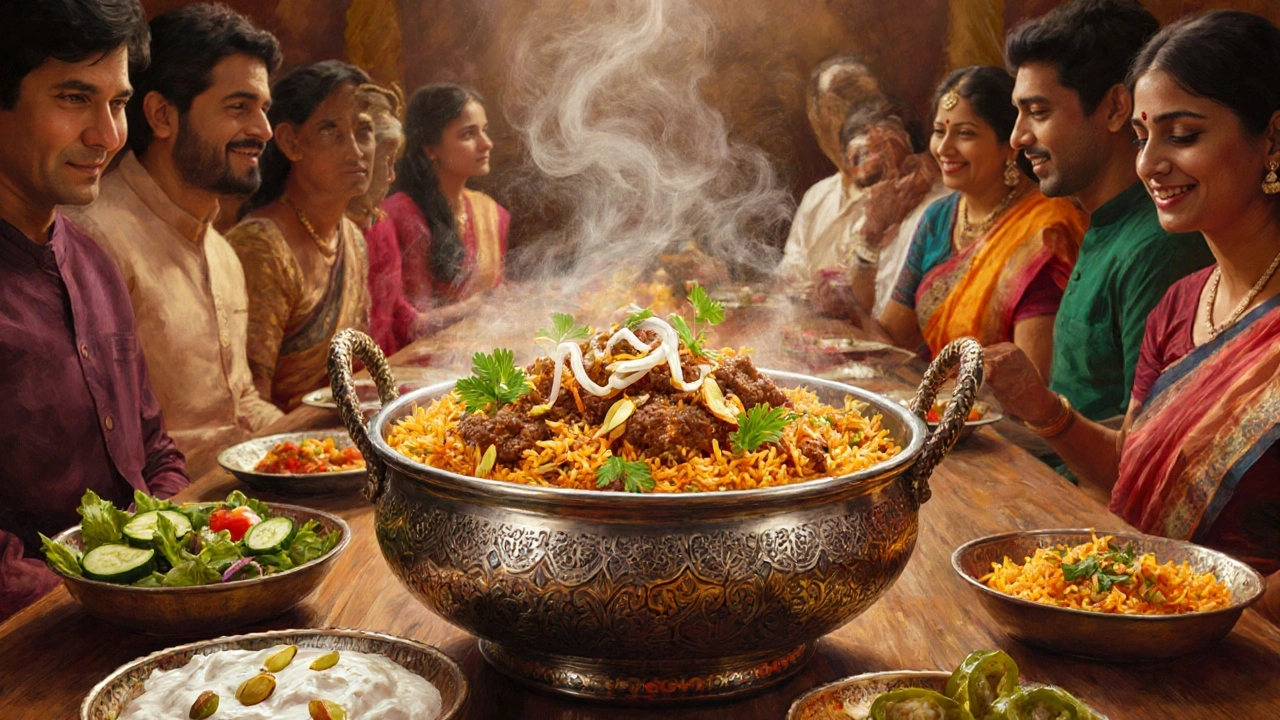
Frequently Asked Questions
Can I use a rice cooker for the par‑boiling step?
Yes. Set the cooker to the "white rice" setting, add the whole spices, and stop it as soon as the grains are 70% cooked. Drain immediately to avoid over‑cooking.
What’s the difference between biryani masala and garam masala?
Biryani masala includes spices like star anise, dried mint, and sometimes a pinch of saffron, providing a more layered flavor. Garam masala is milder, typically added at the end for aroma.
Do I have to use a Dutch oven?
A heavy‑bottomed pot works fine as long as it has a tight‑fitting lid. If the lid isn’t perfectly sealed, wrap the pot with a clean kitchen towel before the lid to trap steam.
Can I freeze leftover biryani?
Definitely. Cool the biryani to room temperature, portion into airtight containers, and freeze for up to three months. Reheat gently on low heat with a splash of water to revive the grains.
How do I avoid the rice getting mushy during dum?
Make sure the rice is only partially cooked before layering and keep the heat very low during the dum. A sealed pot prevents excess moisture from escaping, letting the rice steam gently.
